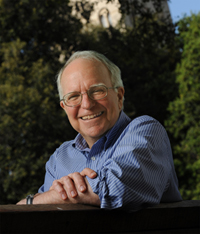The Brookings Institution is committed to quality, independence, and impact.
We are supported by a diverse array of funders. In line with our values and policies, each Brookings publication represents the sole views of its author(s).
2025
Research
BPEA | 1980 No. 1

1980, No. 1
DURING the past decade, two facts about the U.S. labor market became more apparent than ever before: the large magnitude of fluctuations in employment and the lack of any strong response of wages to these fluctuations. The year 1975 saw the most striking manifestations of these features. Total labor input to the private economy fell by 6 percent from a year earlier (relative to trend growth), while wage inflation continued at close to its rate in the preceding boom. Although macroeconomists have puzzled over these characteristics ever since the discipline came into being, efforts redoubled in the 1970s to provide a solid economic rationale for the insensitivity of wages to current economic conditions and for the conspicuous deviations of employment from the smooth trend predicted by simple theories of economic growth.